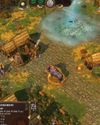
You may have missed it, but for the third time in its existence phone company Apple is moving its desktop computers to a new CPU architecture. This time, from the Intel X86-64 chips it moved to in 2006/7 and with which we’re familiar with from our PCs, to its own designs based on the ARM chips we’re familiar with from our smartphones and tablets.
The move has been mooted for a while, dating back to 2009 when Apple bought processor company PA Semi to develop chips for its iPods and iPhones, starting with the 800MHz, single-core, A4 chip in the 2010 iPhone 4 and first-generation iPad. Since then, the power of the chips has grown hugely, with the 2011 iPhone 4S (Apple A5, dual-core, 1GHz) showing a 68 percent gain in speed, and the A12X Bionic chip in the iPad Pro (2018, eight cores, 2.49GHz, seven GPU cores) showing benchmark results on a par with a Core i7, and AMD’s Durango 2 graphics chip for the Xbox One S.
Leaked benchmarks from developer preview Mac minis equipped with the A12Z chip from the 2020 iPad Pro (usually eight cores, 2.49GHz, eight-core GPU), posted in flagrant disregard of Apple’s T&Cs, show a 30 percent drop in performance when compared to a MacBook Air with a Core i3. That’s nothing short of phenomenal, considering that the chip is not one intended to go into Macs, as it was downclocked and not operating on all cores in the mini, and the benchmark software was using the Rosetta 2 software translation layer to run. Apple has given a two-year timetable to move to Apple Silicon, by which time the glitches will be worked out, Rosetta 2 will be gone, and desktop-class Apple Silicon with who knows how many cores will be available.
Denne historien er fra October 2020-utgaven av PC Gamer.
Start din 7-dagers gratis prøveperiode på Magzter GOLD for å få tilgang til tusenvis av utvalgte premiumhistorier og 9000+ magasiner og aviser.
Allerede abonnent ? Logg på
Denne historien er fra October 2020-utgaven av PC Gamer.
Start din 7-dagers gratis prøveperiode på Magzter GOLD for å få tilgang til tusenvis av utvalgte premiumhistorier og 9000+ magasiner og aviser.
Allerede abonnent? Logg på

A New Dawn - The rise, fall and rise again of PC Gaming in Japan
The so-called 'Paso Kon' market (ie katakana's transliteration of 'Pasonaru Computa') in Japan was originally spearheaded in the 1980s by NEC's PC-8800 and, later, its PC-9800.

MARVEL: ULTIMATE ALLIANCE
Enter the multiverse of modness.

SLIDES RULE
Redeeming a hated puzzle mechanic with SLIDER

GODS AND MONSTERS
AGE OF MYTHOLOGY: RETOLD modernises a classic RTS with care

PHANTOM BLADE ZERO
Less Sekiro, more Wo Long: Fallen Dynasty

STARR-MAKING ROLE
Final Fantasy XVI's BEN STARR talks becoming a meme and dating summons

THIEF GOLD
Learning to forgive myself for knocking out every single guard.

HANDHELD GAMING PCs
In lieu of more powerful processors, handhelds are getting weirder

FAR FAR AWAY
STAR WARS OUTLAWS succeeds at the little things, but not much else shines

FINDING IMMORTALITY
Twenty-five years on, PLANESCAPE: TORMENT is still one of the most talked-about RPGs of all time. This is the story of how it was created as a ‘stay-busy’ project by a small team at Black Isle Studios